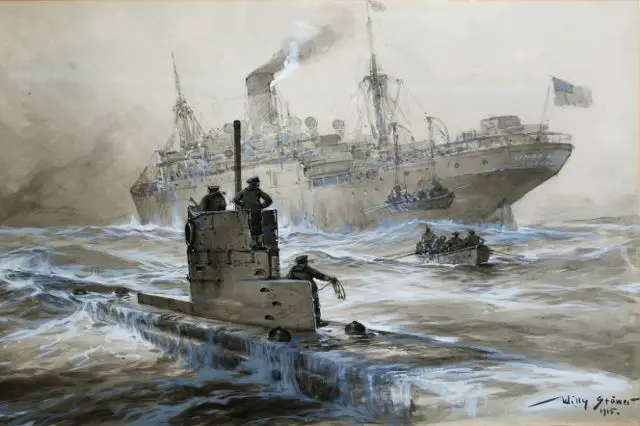Thanks to Amanda for details of this current exhibition. Ed
Remains from the Great War lie, largely hidden and unknown, just off our south coast shores. Many are the final resting place of those who lost their lives when the vessels sank.
Fascinating and moving stories of bravery and sacrifice surrounding these sites are being revealed by the Maritime Archaeology Trust through their Heritage Lottery Funded Forgotten Wrecks of the First World War project.
Six month exhibition
Until October 2015, you can see some recovered artefacts and find out about the Forgotten Wrecks in a temporary exhibition at Sunken Secrets, Fort Victoria near Yarmouth, Isle of Wight.
The four-year project aims to bring together personal and family information, artefact records, historic and archaeological research, and tell the stories behind the sites, through exhibitions like the one at Sunken Secrets and via the project website, educational materials and public events.
Share your knowledge
The Maritime Archaeology Trust are keen to hear from anybody with links to any of the south coast’s First World War wrecks.
One example is the SS South Western which was torpedoed south of the Isle of Wight by UB-59 in March 1918. Only 6 people survived the sinking and amongst the 24 casualties there were crew and passengers of both sexes, ranging in age from 15 to 67. The ship remains on the seabed were only recently positively identified and the Forgotten Wrecks team are keen to hear from anyone with links to the ship which was sailing from Southampton to Saint-Malo, France.
Fascinating stories
Amanda Bowens of the Maritime Archaeology Trust said:
“The project is starting to turn up all manner of personal links and stories connected with these sites, both through research and from relatives of survivors and casualties.
“People often seem surprised that anybody beyond the family should be interested in what they know.”
There are approximately 700 wrecks off the south coast of England dating to the First World War. They were lost due to torpedo attacks, scuttling, hitting mines, collisions, bad weather, poor communication and misfortune. The ships were of all shapes and sizes and carrying out a myriad of different tasks and activities when they were lost.
How you can help
A growing army of volunteers are helping with all aspects of the project. If you would like to get involved, please see our website
Anyone with information about the South Western or other vessels lost off the south coast during the First World War, is invited to contact the team at: [email protected]
Image: © With kind permission of Forgotten Wrecks





